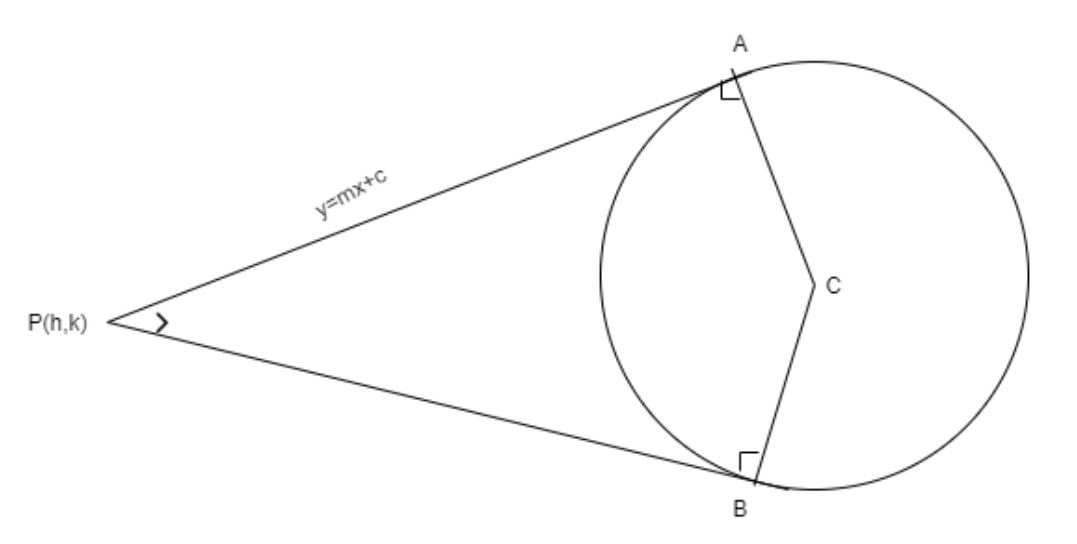Question
Question: Locus of points from which perpendicular tangents can be drawn to the circle \[{{x}^{2}}+{{y}^{2}}={...
Locus of points from which perpendicular tangents can be drawn to the circle x2+y2=a2 is
(a) A circle passing through origin
(b) A circle of radius 2a
(c) Concentric circle of radius a2
(d) None of these.
Solution
For solving this problem we assume that the point from which the tangents are drawn as (h,k) and we take the equation of tangent as general form of equation that is y=mx+c where ′m′ is a slope of tangent and ′c′ is some constant. By substituting the line equation we get a value of ′c′. By substituting the point in line equation we get a value of ′c′. By equating both the values of ′c′ we get the quadratic equation in ′m′ since the tangents are perpendicular by taking the product of slopes as ‘-1’ we get the required locus.
Complete step-by-step solution

Let us assume that the point from where the tangents are drawn as P(h,k)
Let us assume that the equation of tangent as y=mx+c where ′m′ is the slope of the tangent and ′c′ is some constant.
Here, we know that the tangent is passing through P(h,k).
So, P(h,k) satisfies the tangent equation. By substituting P(h,k) in tangent equation we get
